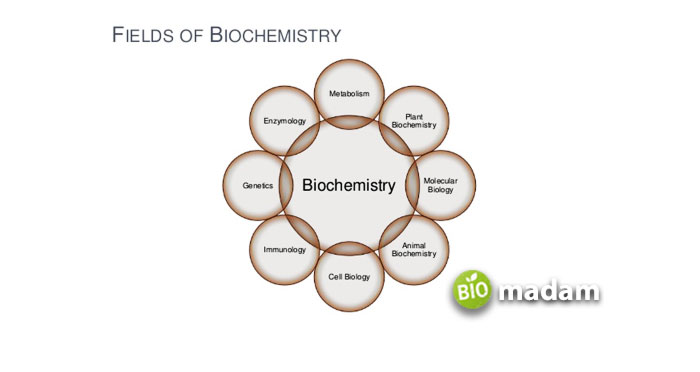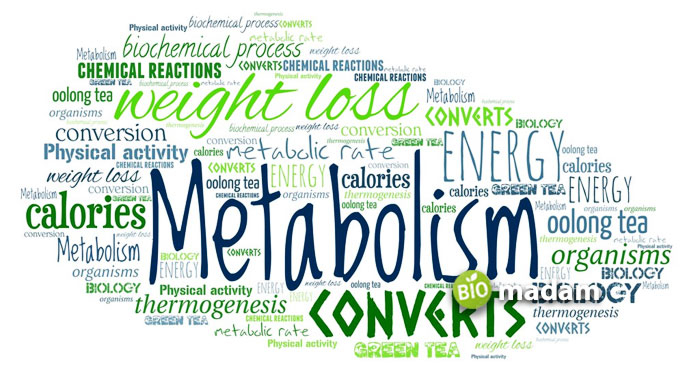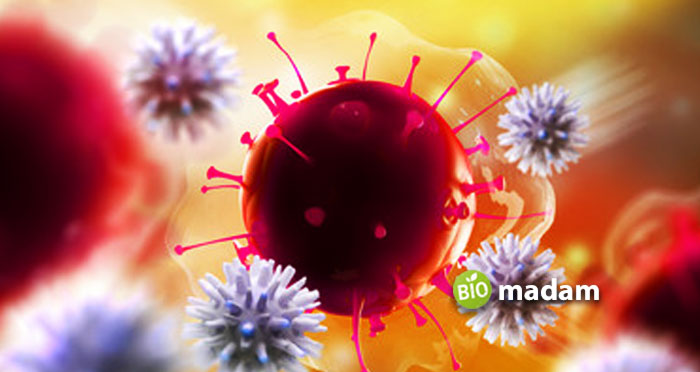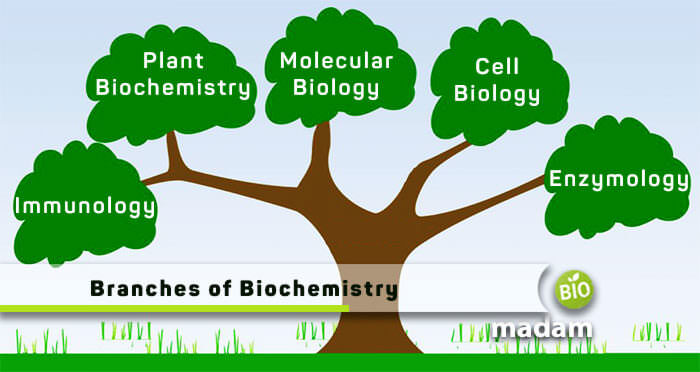Biochemistry stood as a separate discipline in the 20th century when scientists started believing that all science branches are linked to each other. They combined biology with chemistry and physiology to examine life sciences and their chemical composition.
Thus, it would be no wrong to say that biochemistry is living organisms and their chemical science. It led to huge advancements in biology and provided detailed explanations of why diseases occur in humans, animals, or plants.
Have you ever wondered how metabolic reactions in the human body take place? Did you study the control and coordination of cells and tissues with major organs in a living body? Pursuing a career in biochemistry means you could have a deep knowledge and understanding of all of these questions.
Understanding major branches of biochemistry is crucial as it is going to be a bright future for many of us! So, this article is all about what is biochemistry and its primary and secondary branches.
What is Biochemistry?
That branch of science helps us study organisms and microorganisms at their chemical level. The term “Biochemistry” was first introduced in the 1900s by Carl Neuberg. He called this field the “father of modern biochemistry,” which has a mix of different methods to understand complex molecular behavior. In short, biochemistry is a broader term, including biology, chemistry, physics, genetics, and others. Students choose this field for multiple reasons, including research and extended exposure to chemical science. Moreover, a biochemist investigates complex chemical reactions undergoing various processes like metabolism, reproduction, and organ growth. Besides, it is also studied in medical sciences that closely resemble molecular biology and genetics. Professionals review them as the sub-branches of biochemistry. The central theme behind every branch of biochemistry is to study proteins, carbohydrates, lipids, and nucleic acids
Top 10 Important Branches of Biochemistry

Like other subjects, biochemistry is a vast field of study covering hundreds of living organisms, including human blood tests, body functions, diet, growth of plants, genetic systems, DNA, RNA, cell functions, generation, etc.
Generally, biochemistry is known for examining the structure & chemical functions of living things, but in detail, it is divided into different branches. Although there are several sub-divisions of this field, the following are the top ten:
- Molecular biology
- Metabolism
- Clinical chemistry
- Bioorganic chemistry
- Immunology
- Structural biology
- Endocrinology
- Genetics
- Neurochemistry
- Enzymology
Molecular Biology
The foundation of biochemistry helps us study how living organisms work. Molecular biology deals with the structure and function of macromolecules that are essential to life, such as proteins and nucleic acids.
It studies the configuration, function, and makeup of biologically important molecules such as DNA, RNA, and proteins. Thus, molecular biology involves many other areas of biology, such as biochemistry and genetics. The main aim of all of these collaborated studies is to explain the functions of living organisms at the molecular level.
The central dogma is an introductory molecular biology study involving two major steps – transcription and translation. RNA synthesis is called transcription, whereas translation is protein formation from RNA.
Molecular biology covers numerous techniques, e.g., Polymerase Chain Reaction (PCR), cloning, southern blotting, northern blotting, western blotting, eastern blotting, gel electrophoresis, microarrays, etc.
Metabolism
It is another significant branch of biochemistry, making us realize how important it is for food to convert to energy in a living body. As the primary purpose of metabolism is to convert food into energy, it runs the chemical procedure in the body. All chemical reactions involved in maintaining life in a living organism are called metabolism. When metabolism is studied under biochemistry, it is further divided into two categories:

Catabolism and Anabolism
There could be multiple differences between catabolism and anabolism, but these two types can either make or break the molecules. Let’s check out their definitions below:
Catabolism is the breakdown of larger molecules into smaller ones to release energy. These small units oxidize to be used as energy or are utilized in anabolic reactions.
For example, amino acids form proteins, glycogen becomes glucose, and TAG becomes fatty acids.
Anabolism is another type of metabolic process. We usually study the building of cell components and their operations in anabolism stored as energy. In other words, a body requires various molecules, and their formation is termed anabolism.
For example, Bone growth, polypeptide chain, mineralization, and gluconeogenesis.
Clinical Chemistry
Biochemical investigations go on in all departments of clinical medicine that are further used to screen and diagnose diseases in human beings. It made way to another significant branch of biochemistry called clinical chemistry. It mainly deals with the qualitative and quantitative analysis of body fluids to understand a disease properly.
Clinical chemistry, also called chemical pathology, helps clinicians suggest preventive measures to stop or eradicate the disease. Moreover, this field of biochemistry aids in drug monitoring, forensic investigations, and organ transplants.
As we know, medical practice nowadays is highly dependent on tests and analysis of body fluids in the laboratory; it has created a visible importance of this field in disease prevention and cure. Not only does it help the experts diagnose the disease, but it tells its biochemical basis and assists in clinical trials of new drugs.
Bioorganic Chemistry
Another branch of biochemistry that focuses explicitly on how organic compounds react with each other and their importance in biological processes is called bioorganic chemistry. The term “bioorganic chemistry” focuses on two main disciplines – organic chemistry and biochemistry. The experts in this field work on biomolecules’ structure, production, and function. Besides, bioorganic chemists aim to work on the development of new organic compounds that can be used for biological and medicinal purposes.
As the central theme behind studying biochemistry is understanding proteins, lipids, carbs, etc., bioorganic chemistry is almost the same principle. Students opting for it as a career study the structural and functional properties of biomolecules, including proteins, carbs, lipids, and nucleic acids. When it comes to investigating metalloenzymes, bioorganic wins over bioinorganic chemistry.
This field has played a crucial role in discovering and designing drugs through organic compounds. Besides, the rational use of newly developed drugs relies on the basic principles of this branch. Nowadays, it has also emerged in the field of synthetic biology, which aims to design artificial biological systems.
Immunology
The study of the immune system in a living organism is called immunology. It deals with the chemical, physical, and physiological characteristics of the main components of the immune system. Immunology holds great importance for living beings as it covers the defense mechanisms and how bacteria, viruses, or other deadly microorganisms attack a body

You can observe your immune system protecting your body from numerous diseases and lethal infections. Moreover, a robust immune system can help a body repel HIV, cancer, malaria, dengue, and others. Therefore, a person suffering from immune or auto-immune disorders should immediately seek an immunology doctor; that is where this biochemistry branch tops.
Humans with the most muscular immune system have high survival rate chances. Therefore, if any pathogen attacks that body, it fights against it. During this entire procedure, the defensive body molecules will either die or kill the germs, depending upon the strength of your immune system. One can strengthen his immunity through healthy foods, medication, and physical exercises.
Simple blood tests, antigen tests, or antibody tests are performed to check the strength of your immune system.
Structural Biology
Structural biology or structural biochemistry is another branch of biochemistry that has combined properties of physics, biology, and chemistry. This branch provides all the structural information of the living organisms and discusses their physicochemical properties. A structural biochemist aims to describe the molecular structures of a living body at a detailed level. This field is dedicated to telling us the spatial disposition of atoms and molecules, the association and disassociation of biological structures, and the global folding of complex biopolymers. Among all the biological macromolecules, proteins and nucleic acid functions are the most studied. It employs techniques like X-ray crystallography, NMR spectroscopy, and cryo-electron microscopy to reveal molecular structures.
Structural biochemistry has emerged to the extent that its experts are now able to provide all the information regarding different structures of proteins. Moreover, it authenticates the structural domains, motifs, protein dynamics, and folding. This field has worked at its best to fill the gap between chemistry and biology and addressed questions relating to structural innovation in healthcare and biopharmaceuticals.
Endocrinology
Another prominent branch of biochemistry that helps understand the complexities of the endocrine system is called endocrinology. As the name suggests, endocrinology covers everything related to the endocrine system, including several types of glands and organs responsible for producing hormones. Endocrinology has made significant contributions to the field of biochemistry by expanding our understanding of how the body’s signaling systems work. Having said that, endocrinologists are able to detect and treat different health conditions associated with this system, such as thyroid disorder, diabetes, osteoporosis, high BP, and imbalances in reproductive hormones.
Not only this, but the development of this advanced field has helped experts study hormonal growth, stress responses, and overall human physiology. As hormones directly influence our bodily functions, studying them in detail through endocrinology is equally essential. The expansion of this domain is crucial as it provides detailed knowledge of biochemical signaling pathways, receptors, and molecular mechanisms in the endocrine and nervous systems.
Genetics

Genetics is an essential branch of biochemistry that focuses on studying genes, variation, and heredity information of living organisms. Also, it studies and gives information on the transformation of genes from parents to offspring. Heredity means the physical and mental characteristics of an individual passing from one generation to another.
For example, genetics studies the height of genes of a child. If a child is tall, there are more chances of his father or mother being heightened. Similarly, the brown eyes of an individual are because of his parents having brown eyes.
A child takes almost all of his genes from his parents or one of them. Children own some physical factors, like hair, skin color, eye color, height, etc., but genetic diseases like diabetes, anemia, high blood pressure, and many others are also discussed under genetics. These diseases usually pass from generation to generation.
Neurochemistry
As the name indicates, neurochemistry defines and focuses on all the intricate chemical processes within a nervous system. It is a specialized branch of biochemistry which helps the neurochemists study neurotransmitters in detail. This domain is dedicated to examining how small neurotransmitters affect the working of neurons and synapses. All the organic compounds within a nervous system and their roles are studied under neurochemistry.
Till date, neurochemistry has succeeded as one of the most essential branches to understand neurological and psychiatric disorders, such as Alzheimer’s disease, Parkinson’s disease, depression, and schizophrenia. It contributes to telling us how neurotransmitters have helped humans and improved their learning, memory, and behavior. Advancements in this field have paved the way for diagnostic tests and biomarkers to help treat neural disorders.
Enzymology
A living body is an intricate subject that needs to be studied in detail. That is why scientists have distributed the understanding of the human body in different biological sub-branches, where enzymology is the one. As we know, enzymes are the biological catalysts helping a living body carry out chemical reactions, and understanding this field holds great importance. Enzymology is the branch of biochemistry dedicated to studying enzymes’ behavior within the human body. All biochemical reactions are not spontaneous, yet they need a catalyst to proceed called enzymes. These biological structures have helped even in ancient times in processes like sugar fermentation to ethanol.
Enzymology is dedicated to bridging the gap between biology and chemistry and has served in the identification of the protein nature of biological catalysts. Moreover, this field assisted in the discovery of DNA replication, DNA polymerase reactions, DNA sequencing by PCR, and similar processes. The primary goal of enzymology as a sub-branch of biochemistry is to emphasize the structure-function relationships of enzymes and analyze the catalytic behavior of different enzymes in the living body. Experts in this field focus on therapeutic and industrial applications of enzymes, such as enzyme kinetics, enzyme purification, mechanism and regulation of enzymatic activity, and enzyme turnover.
Why is Biochemistry Important?

Biochemistry is a wild field to study in the research area, medical field, agriculture, and many other careers. We have already discussed that biochemistry is the combination of chemistry and biology, so involving two major fields of science in one and explaining life chemistry is also significant! Let’s take an example of biochemistry used in an agriculture field – it will help you control diseases in areas like the wheat field and rice field, which are essential to the survival of human beings.
Biochemistry holds excellent importance in pesticides and relevant diseases as most biochemical substances are used to help control such damages. Biochemistry used in medical sciences allows students to understand how chemical procedures occur, such as the citric acid cycle, Krebs cycle, respiration, and many more that happen in a body. Suppose you clutch the importance of biochemistry in the research area, genes, functions, protein formation, disease control by genetic engineering, RNA and DNA study, etc. In that case, all are the focal points in it.
Talking about the significance of biochemistry in laboratories, it helps diagnose diseases like HBV, HCV, and numerous others through tests performed. Hence, it is essential in almost every field of science.
Final Verdict
Biochemistry and all of its branches have profoundly impacted our world. From producing life-saving medicines to exploring the world of genetics, biochemistry has positively transformed our society. It has helped people understand disease prevention, food production, biological molecules, and whatnot. Last but not least, this field of science is likely to explore and discover more in the future to make the world healthier.

Sana has just completed her MPhil in Microbiology. She loves reading books and the latest discoveries in sciences.


Good and I also enjoy this lesson a lot
Great slides
I liked this lesson u. Have refresh my understanding thank you very much